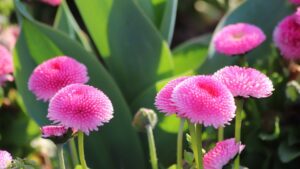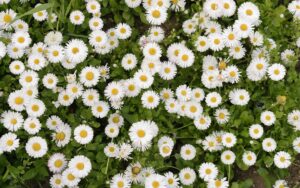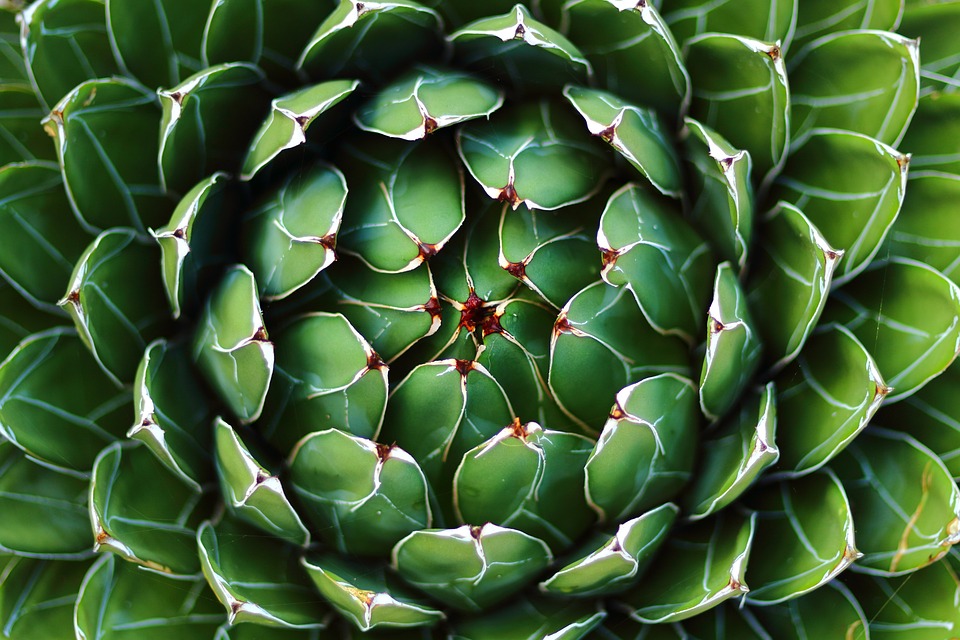Check out the Bellis Perennis Growing Guide and Uses. Learn what it needs to flourish and how to utilize the pretty blooms.
Explore the Bellis Perennis Growing Guide and Uses to learn all about this beautiful flower. Discover easy tips for growing and exciting ways to use Bellis Perennis in your garden and beyond.
Bellis Perennis Profile

The common daisy, scientifically known as Bellis perennis, is a resilient perennial plant native to Europe and Asia. It has a compact growth habit, typically reaching a modest height of 6 to 12 inches. This plant adorns itself with delicate, white, or pink blossoms. Whether you have a garden or limited space like a balcony or windowsill, cultivating these charming flowers is a simple and enjoyable task.
Bellis perennis belongs to the Asteraceae family, which encompasses numerous flowering plants. This particular species is popular for its medicinal qualities, often utilized in traditional medicine for its anti-inflammatory and pain-relieving properties. Additionally, it finds usage in skin care products, highlighting its significance in the cosmetic industry.
Bellis Perennis Growing Guide

Location
When selecting a spot to plant your daisies, it is important to choose an area that receives a minimum of 5-6 hours of sunlight each day. Placing these lovely flowers in a shaded location will hinder their growth and ability to produce vibrant blooms.
Soil
For growing Bellis perennis, opt for soil that is rich in organic matter. Enhance the planting area by incorporating compost or well-rotted manure.
In the case of heavy or clay-based soil, it would be beneficial to include sand or perlite to enhance drainage.
Watering
Keep the soil adequately moist, but it should not be soggy. Avoid overwatering the plant by adopting a simple technique: ensure that the growing medium is thoroughly moist whenever the topsoil feels slightly dry to the touch.
It is advisable to refrain from watering the plant on a daily basis.
Check out Paintbrush Lily Growing Guide
Bellis Perennis Care
Fertilization
For optimal results, fertilize the plants during early spring, right before new growth initiates. This period corresponds to the plant’s peak growth phase.
Use a balanced liquid fertilizer and dilute it to half of its recommended strength. It is advisable to refrain from using high-nitrogen fertilizers, as they may promote excessive leaf growth, potentially hindering flower production.
Pests and Diseases
While Bellis perennis is typically resilient and resistant to pests and diseases, occasional encounters with aphids, slugs, and snails may occur. It is advisable to conduct regular inspections of the plants and manually remove any pests you come across, either by hand or by using a forceful stream of water.
Additionally, organic pest control methods like neem oil or insecticidal soap can be employed as effective alternatives.
Bellis perennis may occasionally encounter problems such as powdery mildew or leaf spot. To prevent these issues, it is crucial to provide the plants with adequate air circulation and refrain from using overhead watering methods. If you observe any indications of disease, promptly remove and appropriately dispose of the affected plant parts.
Bellis Perennis Uses
Medicinal Uses: Bellis perennis has long been used in traditional herbal medicine for various purposes. It is often utilized as a remedy for digestive disorders, such as indigestion and loss of appetite. Additionally, it possesses diuretic properties and can be used to alleviate urinary tract infections.
Skin Care: The common daisy is known for its skin-soothing properties. It is often incorporated into cosmetic products such as creams, lotions, and ointments to treat minor skin irritations, including rashes, eczema, and acne. Its anti-inflammatory qualities make it beneficial for calming and healing the skin.
Wound Healing: The extracts of Bellis perennis possess certain compounds that can aid in the healing of wounds and cuts. It has antiseptic properties that help prevent infection and promote faster recovery. Traditional usage involves applying crushed leaves or poultices directly to the affected area.
Anti-inflammatory Effects: Common daisy contains natural compounds that exhibit anti-inflammatory properties. As a result, it can be used to alleviate inflammation with conditions such as arthritis and joint pain. Consuming tea made from flowers or using topical preparations may provide relief.
Culinary Purposes: Bellis perennis, though not as commonly used in cooking as other herbs, holds a special place in certain culinary recipes. Its delicate flower petals, with their vibrant hues, can grace salads, desserts, or infusions, bestowing upon them a captivating touch of color. Beyond their visual appeal, these petals bring forth a subtle floral flavor, gently infusing the dishes with an enchanting essence. Despite their less frequent appearance, the presence of Bellis perennis in these culinary creations adds a delightful nuance that never fails to captivate the senses.



